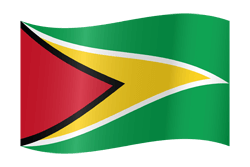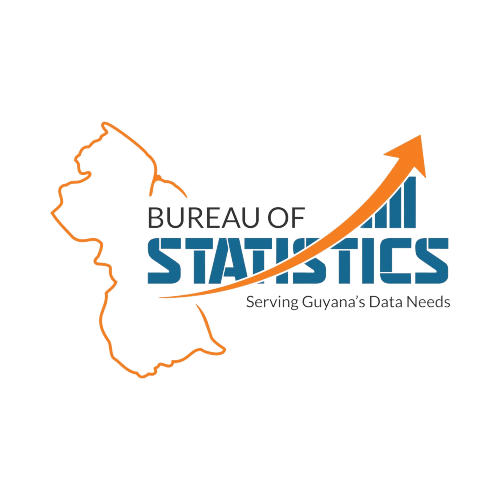Demography, Vital & Social Statistics
Statistics derived for this subject area are guided by the First Schedule of the Statistics Act Chapter 19:09. This Act promulgates the Law which governs the collection, compilation, analysis and dissemination of Demographic, Vital and Social Statistics. The primary sources of the data are administrative records compiled by government ministries, agencies and departments as well as from the population and housing censuses and household surveys.
Demographic statistics widely referred to as population statistics is garnered primarily from population and housing censuses and household surveys. These two sources are used to capture demographic and socio-economic characteristics of the Guyanese population. The comprehensive analysis following the compilation of these statistics may demonstrate changes in the age and sex structure of the country’s population, the level of fertility, infant mortality, labour force participation, the level of internal migration as well as other relevant statistics.
Vital Statistics treats with the occurrences of vital events within a population and the characteristics of these events. More specifically vital events are events concerning the life and death of individuals inclusive of their family and civil status. These events are classified as live births, deaths, foetal deaths, marriages and other related areas.
The area of Social Statistics is concerned with statistics relating to social issues such as health, education and crime. Health Statistics consists of gathering information relating to the health status of the Guyanese people and the quality of health services provided. It includes information on immunization, number of health professionals, number of beds, etc. Also captured within this sub-section is Education statistics relating to the attendance of our school age population at all levels of schooling, i.e. school enrolment, number of teachers, and other education related statistics. Crime statistics is another area encompassed under the caption of social statistics. It refers to reported serious crimes that occur annually within the boundaries of Guyana.
Data for the generation of these social and vital statistics are sourced from administrative data through collaboration with relevant stakeholders such as the General Registrar Office (GRO), the Guyana Police: Force Immigration Department, Ministry of Education Planning Unit, Ministry of Health Statistical Unit and other relevant ministries, agencies and departments.
- Arrivals and Departures, Cheddi Jagan International Airport, Guyana: 2013 to 2025
- Arrivals and Departures, Ogle International Airport, Guyana: 2015 to 2025
- Child Survival and Development (a), Guyana: 2007 to 2017
- Child Survival and Development (b), Guyana: 2013 to 2017
- Education and School Enrolments, Guyana: 2004 to 2008
- Health Institutions by Type and by Region, Guyana: 2024
- Immunization by Region, Guyana: 2008
- Nutrition, Guyana: 2013 to 2017
- Number of Marriages by County, Guyana: 2000 to 2014
- Number of Marriages by Region, Guyana: 2015 to 2024
- Reported Serious Crimes, Guyana: 1990 to 2022
- Reproduction, Guyana: 2004 to 2017
- Year-end and Mid-year Population Estimates, Guyana: 1992 to 2021
- Yearly and Quarterly Deaths by Region and by Sex, Guyana: 2009 to 2023
- 2012 Census Life Table (PDF – 468 KB)
- 2012 Census Preliminary Report (PDF – 16.9 MB)
- Final 2012 Census Count (PDF – 88.1 KB)
- Final_2012_Census_Compendium 1 - National Population Trends: National Size and Growth (PDF - 799 KB)
- Final 2012 Census Compendium 2 - Population Composition (PDF - 1.45MB)
- Final 2012 Census Compendium 3 - Economic Activity (PDF – 1.08 MB)
- Final 2012 Census Compendium 4 - Analysis for Education, Fertility Trends & Patterns and Infant & Childhood Mortality (PDF – 1.40 MB)
- Final 2012 Census Compendium 5 - Housing Stocks and Amenities (PDF - .71MB)
- Guyana Working Life Table (PDF – 88.1 KB)
- 2012 Household by Village (Zipped – 26.8 MB)
- 2012 Population by Village (Zipped – 18.3 MB)
Mid-year Population Estimates: Mid-year estimates of the population are done using the age structure and sex distribution of the most recently concluded Population and Housing Census as well as administrative data. These estimates are derived using extrapolation methodology. The extrapolation methodology also takes into account data on natural increase (births and deaths) and migration. These figures are derived from births and deaths registration and immigration records. Health Statistics: Health consists of information that speaks to the overall health status of the Guyanese people and the quality of health services provided. It includes information on immunization, number of health professionals, number of beds etc. Education Statistics: Education statistics captures the attendance of our school age population all levels of schooling. Crime Statistics: Crime statistics captures reported serious crimes that occur within the boundaries of Guyana.

